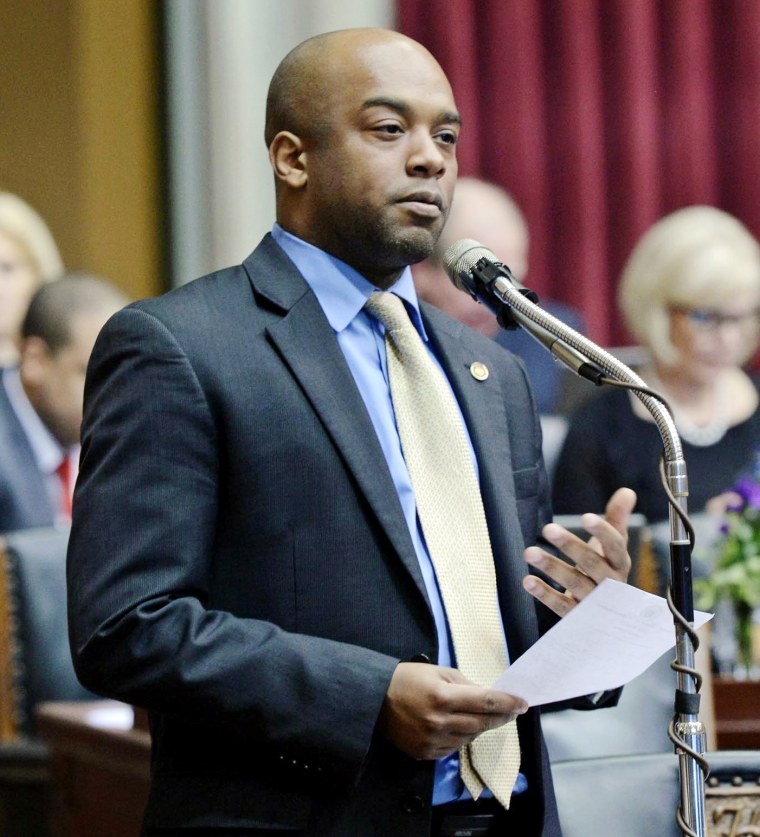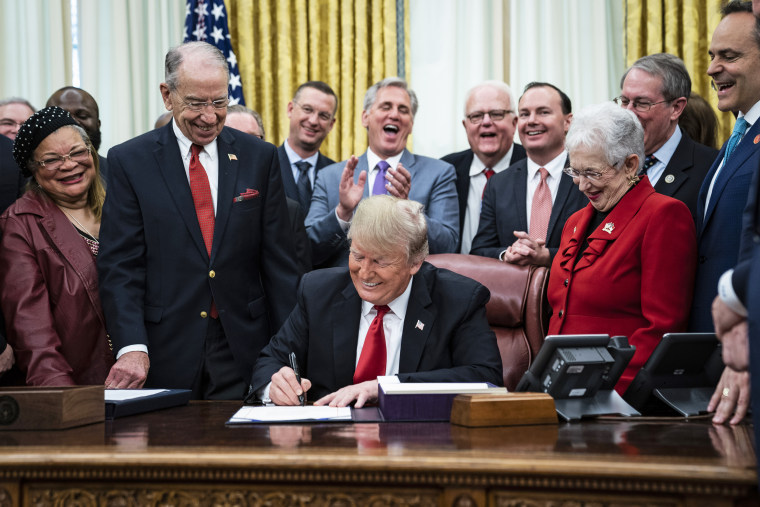Thousands of non-violent federal prisoners subject to early release under promising Trump-era laware poorly implemented, confused, and bureaucratic. Due to the delay and the defense of the prisoners, he remains in custody almost four years later. The group, affected prisoners and former federal prison officials say.
According to law-savvy prisoners, the first-step method is moved by identifying qualified prisoners and transferring them to home confinement or another form of supervised release. Even the Byden administration's attempt to clarify seems inadequate.
The Ministry of Justice was tasked with enforcing the law through the Federal Prison Department, but Director Michael Carvajal, taking over the Trump administration,was criticized in January. Announced retirement. Marked by the agency scandalof his critical tenure. No alternative to Carvajal has been designated, and advocates of criminal justice reveal ongoing failures by allowing the bureau to imprison even one person beyond what is permitted by the First Steps Act. Claims that.
"It shouldn't be this complicated and shouldn't be that long," said Kevin Ring, president of the non-profit organization FAMM. This is also known as Families Against Mandatory Minimums. "I'm here four years later, but it's annoying."
The Justice Ministrysaid in Januarythat a prisoner went toprison. Announced the final rules that implement the essential function of the law to earn so-called time credits earned through participation in. It is a work programand is calculated as part of the process of escaping early.
The problem is, supporters say: they have identified inmates to whom time credits have not been applied, and in some cases the inmates have not been released as quickly as they should.
Former Missouri State Assembly member Courtney Curtis, who was sentenced to 21 months in federal prison last year for wire fraud related to misallocation of campaign funds, said in a letter shared with NBC News. So his time credits were properly counted after participating in programs such as "Success", "Pharmaceutical Education" and "Talking to a Doctor".

Curtis, 41, detained at the federal correction facility Elkton in Ohio, is in January. Since then, no time credits have been added. If added, he believes it was released in early June. His current release date is October 22nd.
"As one of the many inmates who benefit from FSA," he wrote, referring to the First Steps Act: While maintaining productivity, BOP and its systematic practices prevent most classes from being taken in an orderly manner or released immediately when needed, as specified by the FSA. I did. I wonder if this is due to specifications and what is the overall range of affected inmates.
The Justice Department refused to comment on the Curtis case for privacy reasons.
As of June 18, more than 8,600 prisoners will be recalculated and released with time credits, according to data provided by the Prison Department. However, the number of inmates who were released early but are eligible to remain imprisoned is unknown.
In response, a bureau official said, "There is no data to suggest that the prisoner's release date was delayed."
However, some industry experts disagree with the Bureau's own data identifying about 66,600 inmates eligible to earn time credits.
Thousands of prisoners who do not receive the full benefits of the First Steps Act (days since the federal prison decision) simply because the authorities are uncertain how to calculate these benefits. I presume that there is. " Walter Pavlo, president of the consulting firm Prisonology LLC, has specialists such as case managers, observers, and statement specialists from the former prison bureau.
Time Credit Calculation
Holly Harris, a longtime Republican strategist who sought to pass the First Steps Act as head of a nonpartisan judicial action network, slowed down the change of government. Deployment.
"Not only that, the Byden administration has implemented criminal judicial reforms, and now we can't get any answer," she said. Individuals suffering unnecessarily in prison due to unnecessary expenses of taxpayers.
In 2018, then President Donald Trump signed a bipartisan First Steps Act as a way to reduce communism and ease the population of federal prisons. 63} Currently in detention. In particular, advocates of the law believe that they can reduce particularly harsh judgments against non-violent drug offenders and reduce racial disparities that affect the colored races of the criminal justice system.

Within the first year of the law, more than 3,000 inmates were released early from prison, justice According to the ministry, there are currently more than 7,500 inmates in total. Inmate eligibility is measured by an algorithm called the Prisoner Assessment Tool (PATTERN), which targets estimated risks and needs, in various categories such as history of violence and whether or not you were involved in a serious incident during imprisonment. With a score, they may get angry again. In order to collect time credits for early release under the First Steps Act, prisoners must be at "minimum" or "low" risk of repeat offenses and not convicted of certain serious offenses.
Time Credit goes to a 30-day prison and work program related to anger management, mental health, financial literacy, and other topics aimed at instilling personal skills. Granted based on the participation of prisoners. Once the credits have been calculated and determined to be equal to the remaining time of the judgment, the prisoner can move from prison to "pre-liberation management" such as half-hearted homes or home detention. It may also be subject to monitored releases such as probations.
However, prison advocacy groups say the availability of these rehabilitation programs varies widely from prison to prison. This simply means that some prisoners simply do not have access to sufficient earning time credits. The situation worsened due to a shortage of staff in the Covid outbreak
Moreover, even with the right classes, time credits are not calculated on a regular basis. Some prisoners say. , May delay their ability to be released sooner.
The Justice Department's final rules also allow retroactive counting of time credits for prisons and work programs in which prisoners participated after the First Steps Act was enacted in 2018. increase. However, Pablo said the prison bureau had no mechanism. Implemented to properly track the participation of prisoners, he said that the agency "does not promote the timely calculation and application of time credits in accordance with the final rules, and the prisoners are unnecessarily long-term. We are forcing you to provide a period of detention. "
In the case he reviewed, he stated that he saw prisoners who may have been under previous release or pre-release control from 6 months to 1 year.
"The biggest problem is that no one on the front line seems to understand the new rules," Pablo said. "This requires a task force now."
Algorithm revision
The Justice Department believes that some risk categories investigated by the tool exacerbate racial disparities. He said he continues to evaluate the use of the PATTERN algorithm in response to supporters' concerns about it. According to agency statistics released in November, about 55% of white inmates are categorized as "minimal" or "low" risk of remarriage compared to about 28% of black inmates. Was there.
Examining the effectiveness of the First Steps ActIn the 2022 Annual Report, the Justice Ministry said, "To alleviate various racial and ethnic disparities, PATTERN We are implementing another updated version. " Associated with the previous risk level category.
However, Florida criminal defense attorney Jim Ferman, who considered the First Steps Act, said how the algorithm was tuned, especially to prevent color prisoners from being disadvantaged. He said he needed more transparency. Blacks and Latin Americans are still overrated in US prisons.
The federal government "showed the world how we lead the imprisonment, but it can also show the world how to get rid of people," he said. "Why don't you show the data to all mathematicians around the world and evaluate how racially discriminatory the new version of the tool is?"
Justice Secretary Merrick Garland reiterated in an email that he "directed continued research on tools to improve the fairness, efficiency, and predictive validity of risk assessment systems."

Frustration was felt by former imprisoned prisoners like Dianthe Brooks, 52, who received four years in 2018. Judgment after pleading guilty to wiring fraud in a million dollar kickback plan.
She said she was released early in 2020 from prison in Dunbury, Connecticut, to home detention because of her underlying medical condition at high risk of Covid. However, her ankle monitor was removed until January when her time credits were recalculated under the new efforts of the Byden administration. She believes that if the program was running as intended, it would have happened in June 2021 based on her time credits.
Currently, Brooks is advocating on behalf of Dunbury and other prisoners across the country to ensure that they understand their rights under the law.
"The way they calculate the time is still ambiguous," she said. "No one can provide you with a manual on the classes you qualify, the credits you get, and how they apply. It doesn't exist. So, whether your time was calculated correctly How can I find out? "

Another Alice Phillips, a former inmate of Danbury and a defender of prisoners, said she was surprised to find out after working in prison. Stated. Ground crew, manual labor were ultimately not eligible for time credit. She said she was not given any guidance from prison in December 2019, except that she was said to be a qualified minimum-risk criminal under the First Steps Act.
Phillips, 56, who was sentenced to two years in 2019 after being convicted of wire fraud related to a real estate plan, alsoin 2020 to help with the corona virus. Released to home confinement. Relief and Financial Security ActShe continued to work while she was locked up in a prison-approved job, but credits for those hours weren't counted as they are today, and her trials. He said the period would last until 2024 instead of 2023.
Danbury prison officials refused to comment on the allegations of certain prisoners, but in a statement, computer announcements, one-on-one program review appointments, city hall meetings, etc. Said to convey "important information" in several ways. , And "The release date of for each prisoner is calculated according to federal law."
However, Phillips promises that the first step method is for everyone. I believe I haven't played.
"I acted. I did the job. I qualified for these credits," she said. "I'm not free, but I could be free sooner."


